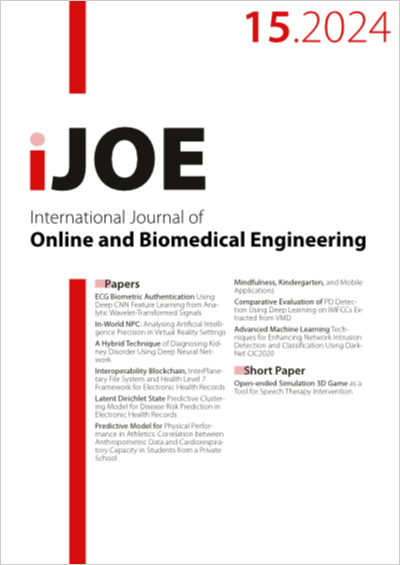A Hybrid Technique of Diagnosing Kidney Disorder Using Deep Neural Network
DOI:
https://doi.org/10.3991/ijoe.v20i15.50409Keywords:
Iris analysis, Feature extraction, LSTM, Deep neural network, Iris image, medical diagnosis, kidney disorderAbstract
The growing demand for renal alternative medical diagnostics is driven by their non-invasive, early, real-time, and painless characteristics. Early diagnosis of kidney disease is crucial, given its severity as a health issue. This paper introduces a novel method that integrates residual networks with long short-term memory (LSTM) through deep feature analysis. The LSTM network is employed to extract global features from the iris, such as Wolfflin nodules and lacunae. The Res-Net classification system is then used to distinguish between kidney and non-kidney diseases. Various image-processing techniques are applied to segment, enhance, and normalize the iris image while extracting its distinctive features. Experimental results show that our model achieves 95% accuracy in classifying kidney and non-kidney conditions based on iris analysis. Future work aims to predict additional diseases using a deep neural network applied to iris images.
Downloads
Published
How to Cite
Issue
Section
License
Copyright (c) 2024 POOVAYAR PRIYA M, EZHILARASAN M

This work is licensed under a Creative Commons Attribution 4.0 International License.



